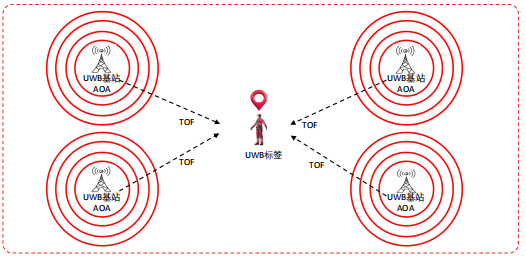UWB & 4G Smart Watches: Precision in Real-Time
Discover the game-changing fusion of UWB smart watches and 4G smart watches. Explore how these innovative devices, along with smart rings, are revolutionizing precision and connectivity in real-time.
10/19/20254 min read


Understanding UWB Technology and Its Advantages
Ultra-Wideband (UWB) technology represents a revolutionary shift in wireless communication, distinguishing itself from traditional methods such as Bluetooth and Wi-Fi. Operating over a broad spectrum of frequencies, UWB transmits data by sending short, low-energy pulses, which allows for incredibly accurate distance measurement and location tracking. This unique approach enables UWB to achieve precision levels that are typically unattainable with other wireless technologies.
One of the primary advantages of UWB technology is its exceptional accuracy in location tracking. UWB can pinpoint locations within a range of centimeters, making it particularly valuable for applications that require high precision, such as navigation in complex indoor environments. This capability is especially relevant for smart watches, where enhanced location services can provide users with reliable information, improving the overall experience.
Moreover, UWB is characterized by low power consumption, which is a significant benefit for battery-operated devices like smart watches. By utilizing short transmission times, UWB effectively conserves energy while still maintaining robust communication capabilities. This efficiency is crucial, as it extends the operational time of devices without frequent recharging, thus enhancing user convenience.
Another notable advantage of UWB is its minimal interference with other wireless signals. Since UWB operates over a wide range of frequencies, it is less susceptible to congestion and disruptions common in narrower band technologies. This attribute is vital for maintaining seamless communication in environments crowded with multiple wireless signals. Additionally, UWB's capabilities allow for enhanced user interaction through features such as secure and swift pairing with other devices, as well as precise identification of users' locations, elevating the smart watch experience.
The Role of 4G Connectivity in Modern Smart Watches
In the ever-evolving landscape of wearable technology, 4G connectivity has emerged as a transformative force in the development of smart watches. By leveraging the enhanced speed and bandwidth offered by 4G networks, smart watches can achieve faster data transmission rates compared to their predecessors, such as 3G. This advancement greatly diminishes latency and significantly improves the overall user experience, allowing for instantaneous interactions and real-time updates.
One of the primary advantages of 4G connectivity is its ability to support a wide range of applications that require consistent and reliable access to the internet. Through 4G technology, smart watches can handle more complex applications, such as streaming music, accessing navigation tools, and retrieving real-time notifications directly from user’s smartphones. This results in a seamless integration between devices, which enhances the user’s interaction with their wearable technology.
Moreover, the transition from 3G to 4G connectivity fundamentally changes how users can utilize their smart watches in everyday scenarios. For instance, health monitoring apps that track real-time biometric data, such as heart rate or sleep patterns, can upload data instantly to health platforms, providing users with timely insights about their wellbeing. Additionally, 4G connectivity also allows for advanced functionalities such as using GPS navigation without the need for tethering to a smartphone, resulting in greater independence for the user.
Furthermore, as the demand for smart watches continues to grow, the importance of 4G connectivity becomes increasingly evident. Users expect their devices to provide immediate feedback, facilitate communication, and deliver essential services with the utmost efficiency. Thus, the evolution toward 4G capabilities reinforces a pivotal shift in how smart watches operate, distinguishing modern innovations from previous models constrained by slower mobile internet generations.
Synergy Between UWB and 4G: Real-Time Response in Smart Watches
The integration of Ultra-Wideband (UWB) and 4G technology in smart watches represents a significant advancement in wearable technology. This combination enables unprecedented millisecond-level response times, enhancing the overall functionality of these devices. UWB's capabilities allow for precise location tracking and distance measurement, while 4G ensures that this data can be transmitted quickly and reliably, making it instrumental for real-time applications.
One of the most compelling applications of this synergy is in the area of fitness tracking. Smart watches equipped with UWB can accurately measure users' movements and workout intensity in real-time. Unlike traditional fitness trackers that rely on accelerometer data alone, watches utilizing UWB can gauge position with a high degree of accuracy, allowing for better insights into performance metrics. This technology not only improves the accuracy of calorie counting and distance measurement but also provides feedback in real-time, thereby helping users optimize their workouts effectively.
Another salient application is seamless navigation. Smart watches integrated with UWB and 4G can provide highly accurate location services, which enhance capabilities for directions and locate points of interest. For instance, when users find themselves in complex environments such as malls or transit stations, UWB can facilitate precise indoor positioning, while 4G communication enables continuous updates and adjustments. The practicality of this feature is particularly beneficial for urban commuters and travelers.
Moreover, the enhanced communication features that arise from this technology fusion can significantly improve usability. For example, smart watches can facilitate near-field communication (NFC) and secure data exchanges between devices with minimal delay. This capability is not only useful for financial transactions but also fosters better connectivity within smart home ecosystems. Existing smart watches, such as the Apple Watch Ultra and Samsung Galaxy Watch 4, exemplify how the fusion of UWB and 4G creates a next-generation user experience, solidifying their roles as essential tools for modern living.
The Future of Smart Watches: What to Expect
The evolution of smart watches has reached an exciting juncture with the integration of Ultra-Wideband (UWB) technology and 4G connectivity. As we look towards the future, several advancements seem imminent that could further redefine how consumers interact with these devices. Enhanced features such as location precision, improved health tracking, and increased connectivity capabilities are on the horizon. For instance, UWB's capability to provide accurate spatial awareness could lead to smarter features in navigation and transaction authentication, elevating user experiences significantly.
Market trends indicate that consumer demand will likely drive the incorporation of cutting-edge technologies into smart watches. As users become more reliant on these devices for not only connectivity but also for health monitoring and daily functionality, manufacturers are called upon to innovate. Upcoming features may include advanced biometric sensors that leverage both UWB and 4G for real-time health analytics. This could greatly enhance user engagement by providing actionable insights derived from the data collected, thereby not only facilitating preventive healthcare but also enabling timely medical interventions.
However, these advancements present several challenges. For manufacturers, optimizing UWB and 4G technologies while maintaining battery life and compact design will be crucial. Additionally, ensuring robust security protocols to guard against potential vulnerabilities posed by enhanced connectivity is essential. As smart watches become pivotal in health tracking and personal security, the implications of any shortcomings in these areas could deter consumer trust.
In conclusion, the future of smart watches appears promising with UWB and 4G technologies set to revolutionize user experiences significantly. By anticipating and addressing the challenges that arise, manufacturers can pave the way for a new era of smart watches that meet the evolving needs of their users while maintaining high standards of functionality and security.
